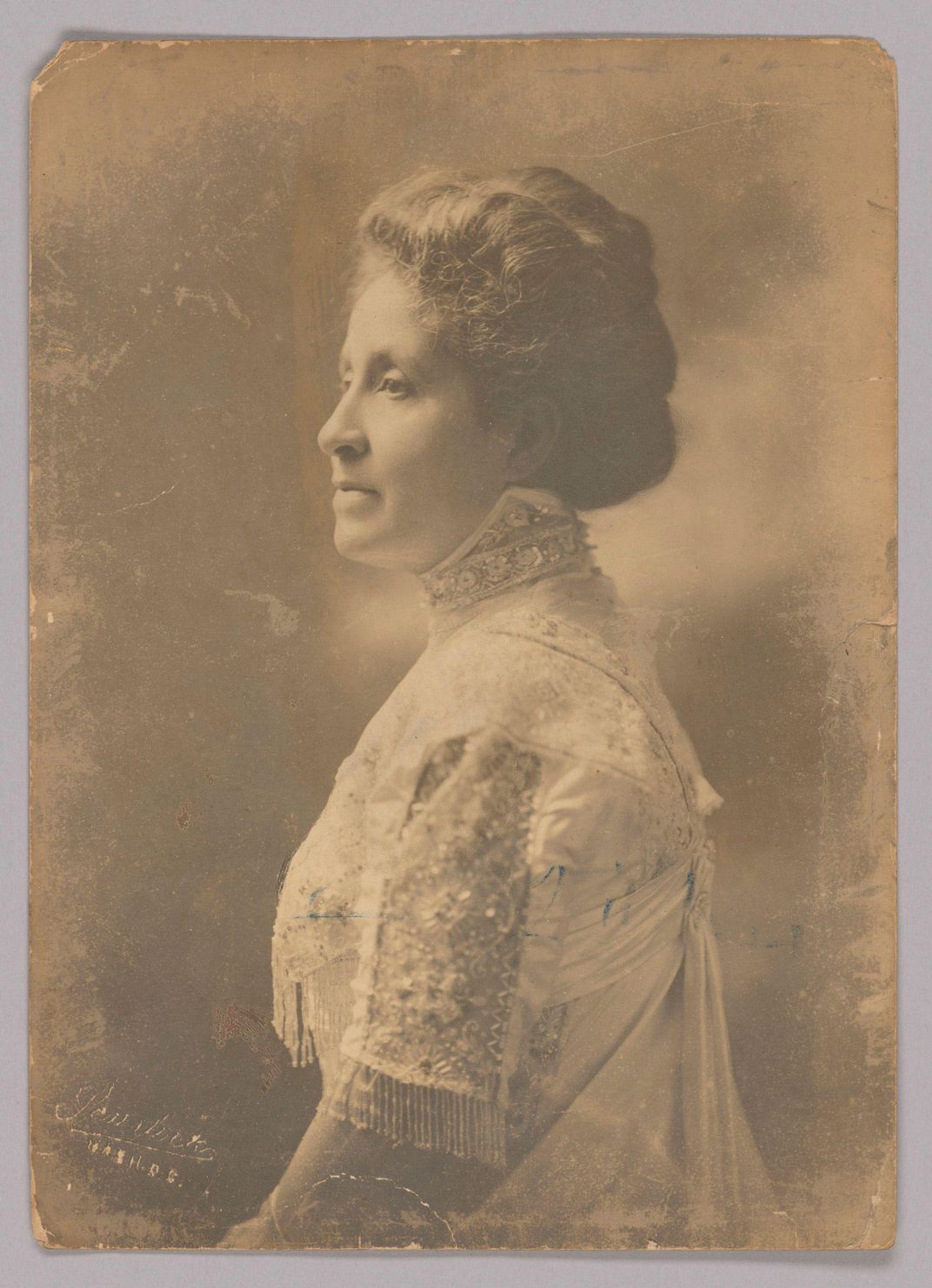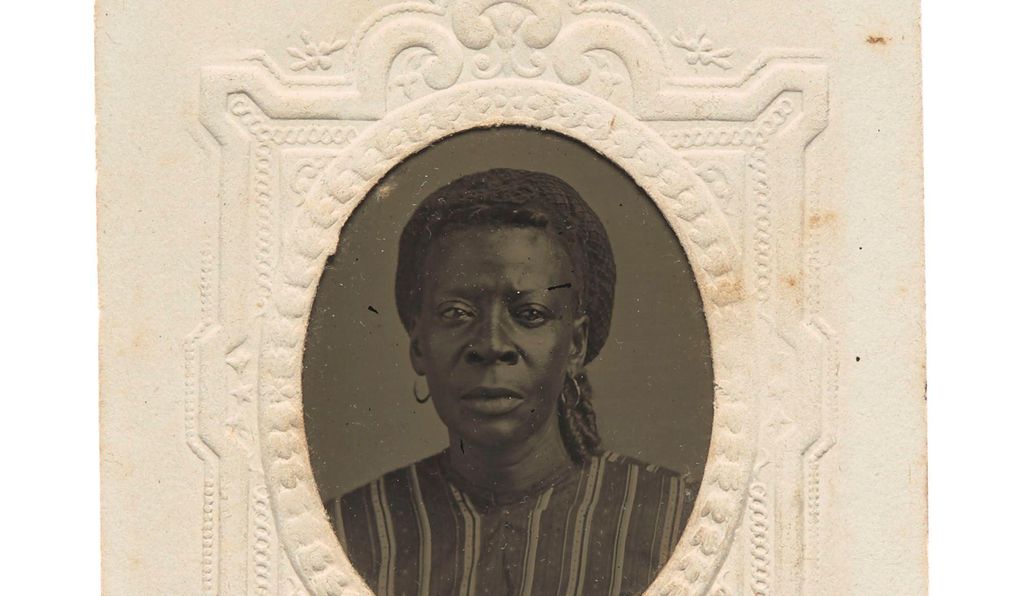ART NEWS
For Turn-of-the-Century African-Americans, the Camera Was a Tool for Empowerment | At the Smithsonian
[ad_1]
Regal would be the best way to describe the photograph of Mary Church Terrell. Delicately swathed in lace, satin and crystals, the charismatic civil rights activist is seen in profile. The front of her tasteful Gibson pompadour is dappled with light and her face is illuminated as if a single ray of sun had parted the clouds in the sky. It’s a highly flattering image of the D.C. activist and suffragist, and Terrell thought so herself.
“In some of the material we got from [Terrell’s] family, we know that she had sent [this picture] to the Chicago Defender for which she was writing a column for a few years,” says Michèle Gates Moresi, supervisory curator of collections at the Smithsonian’s National Museum of African American History and Culture. “She wrote on the back of it, ‘make sure you return this photo.’ And I thought that spoke to her understanding of the importance of controlling and owning your image.”
Moresi, Laura Coyle and Tanya Sheehan are contributing authors of the new book Pictures with Purpose, the seventh installment of the museum’s photo book series, “Double Exposure,” which shares some of the 25,000 rare photographs held in its collections.
Pictures with Purpose examines the collection’s photographs from the turn of the century, when African-Americans were reconciling the painful aftermath of enslavement and forging a new future fighting for equal rights. Coyle, who is the head of cataloguing and digitization at the museum, says photography was embraced by African-Americans during this period, as it was a means for them to reshape the narrative.
“For the African-American community, photography was particularly important, because when they were in control of the camera, they had a chance to shape their own image for themselves, for their community and for the outside world in a way they normally didn’t have a chance to do in society,” she says. “Often, [African-Americans] were subject to racism and stereotypes and denigrating situations, but in photography, they could portray themselves as they were and as they aspired to be.”
Coyle says Frederick Douglass is best known for his use of photography as a political and social tool. He set out to make himself the most photographed man of the 19th century, surpassing even Abraham Lincoln. Others, like Terrell, followed suit and distributed images of themselves that showed who they truly were, instead of who society expected them to be.
Terrell, who was one of the first African-American women to earn a college degree, was a founding member of the National Association for the Advancement of Colored People, as well as a founder and first president of the National Association of Colored Women. Living in Washington D.C., she worked to include the voices of black women in suffrage discussions and promoted further education and access to daycare for black women. A fierce civil rights advocate, beginning with her years at Oberlin College, she fought to end lynching and she continued to participate in picket lines well into her 80s.
Though Terrell was hugely influential in ensuring equal rights for women and minorities, Moresi says she’s largely overlooked outside of academic and D.C. communities. Given that Terrell “doesn’t always get her recognition” during Black and Women’s History Month, Moresi felt it was important to include Terrell’s image in the book.
This particular photo of Terrell was chosen, not only because it was one of Terrell’s personal favorites, but also because it was taken by Addison Scurlock. For 83 years, Scurlock and then his sons ran a photography studio in D.C. that became the go-to place for African-Americans in the city to sit for their portraits. Scurlock was well known for making “complimentary” portraits that highlighted his subjects’ skin tones and made them look “beautiful and glamorous,” Moresi says.
While Scurlock’s work is profound in its own right, it was his prolific nature in taking snapshots of life around him that has proven invaluable to modern historians.
“He documented almost every aspect of people’s lives,” Coyle says. “Informal portraiture, wedding photographs and baby photographs, and he photographed everyday life, people having a good time. Through the Scurlock studio, we have a really rich document of middle-class black life from 1911 into the 1970s.”
(NMAAHC)
Some of Scurlock’s photographs, and many included in the new book, are of unidentified subjects. Though Coyle says most museums shy away from photos of unidentified subjects, the African American History Museum relies heavily on these photographs, as they help to restore the stories and lives of forgotten or marginalized individuals. The majority of the early photographs in the museum’s collection are of unidentified subjects.
One such photo, taken by an unknown photographer, is a close up of a woman from the 1890s in a simple striped dress. Wearing plain gold hoops and staring resolutely into the camera with light pooling over the right half of her face, there’s a striking energy exuded from the subject that drew Coyle and her cohorts to the picture.
“This is a person who had, in all likelihood, been enslaved. . . but now had the power and the ability to create her own image for the public through photography,” Coyle says. “She’s so compelling, she stares so directly at the camera. . . she has a very dignified, almost confrontational demeanor. If I had to pick a word that comes through in this photograph, it would be ‘strength.’”
On Friday, March 29, 2019, inspired by the new photography book series, Pictures with Purpose, the National Museum of African American History and Culture is presenting a symposium to examine the meaning and significance of early images of African-Americans and works produced by African-American image makers. Register here to attend.

(NMAAHC)
Like this article?
SIGN UP for our newsletter
[ad_2]
Source link











